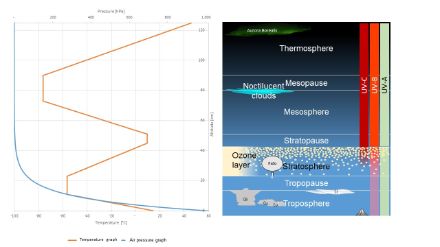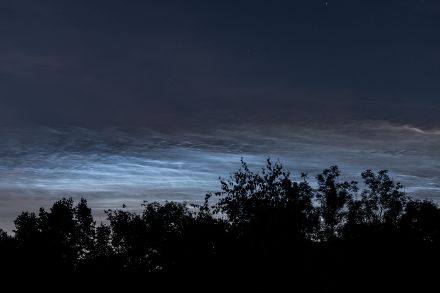Service Navigation
Search
The vertical structure of the atmosphere

Mesosphere
The mesosphere is relatively sparsely researched since it lies far above the reach of weather balloons and aeroplanes, and below the operational altitude of satellites. It has occasionally been probed with rocket launches. Due to the decreasing air mass, hardly any ozone is produced at these altitudes (LINK to stratosphere), resulting in a vertical temperature decrease, as is also seen in the troposphere (LINK to troposphere).
Shooting stars and noctilucent clouds
Two well-known phenomena that can occasionally be observed in the mesosphere are shooting stars and noctilucent clouds (high-altitude clouds glowing at twilight). From outer space, the low-mass mesosphere is the first layer that affords protection from meteoroids, causing them to mostly burn up as they pass through it. To us, these burning meteoroids often appear as shooting stars.
The other phenomenon that is occasionally observed is noctilucent clouds. The lowest temperatures during the summer months of the respective hemisphere are recorded in the mesosphere. If the temperature is cold enough, the little water vapour that is present in the mesosphere can crystallise and form ice clouds. Shortly before sunrise or after sunset, while it is still or just turning night on the Earth’s surface, these clouds can be illuminated by the sun and observed with the naked eye.
